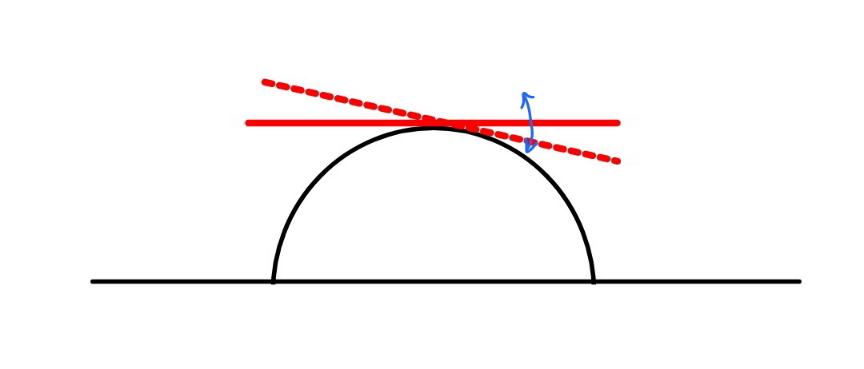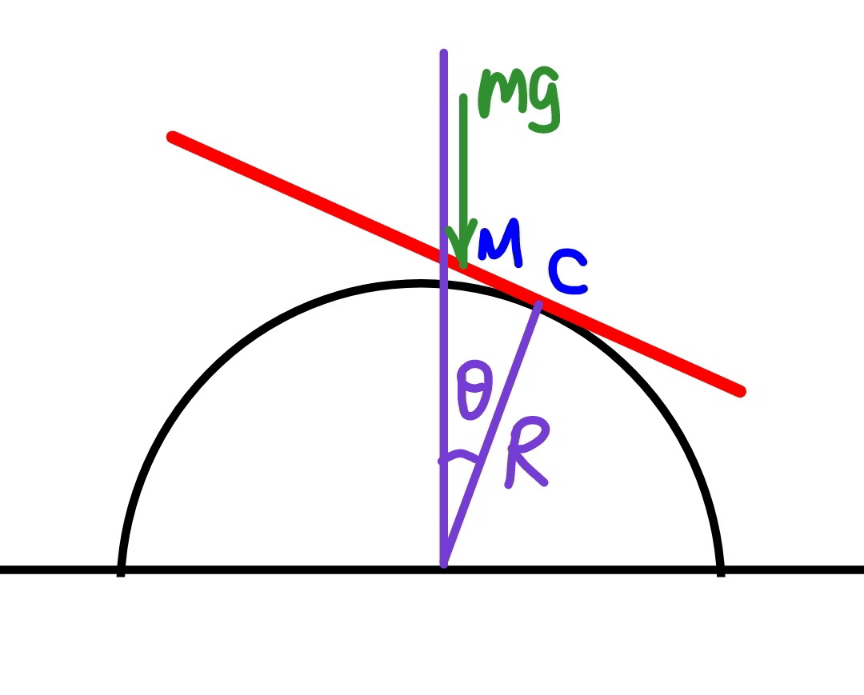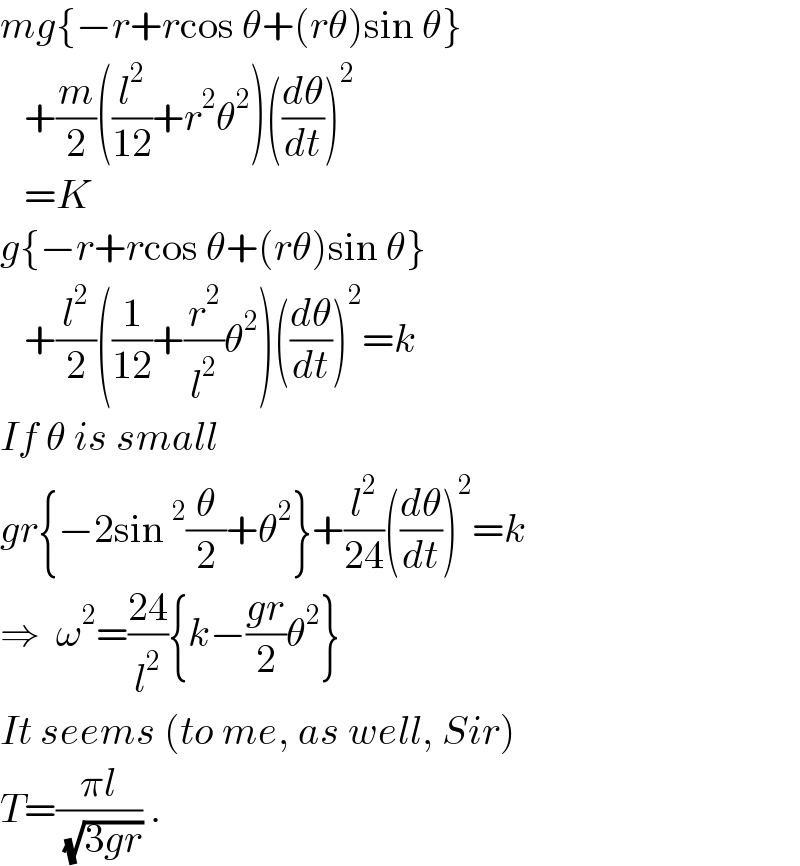
Question and Answers Forum
Question Number 175000 by mr W last updated on 15/Aug/22

Commented by mr W last updated on 16/Aug/22

Answered by mr W last updated on 16/Aug/22

Commented by ajfour last updated on 16/Aug/22

Commented by mr W last updated on 16/Aug/22
+2mR^2 θ((dθ/dt))^2 =−mg(Rθ)cos θ [(L^2 /(12))+(Rθ)^2 ](d^2 θ/dt^2 )=−Rθ[g cos θ+2R((dθ/dt))^2 ] for very small θ, we can say ≈ (L^2 /(12))×(d^2 θ/dt^2 )=−gRθ ⇒(d^2 θ/dt^2 )+((12gR)/L^2 )θ=0 ω=(√((12gR)/L^2 )) ⇒T=((2π)/ω)=((πL)/( (√(3gR))))](Q175029.png)
Commented by mr W last updated on 17/Aug/22

Commented by Tawa11 last updated on 17/Aug/22

